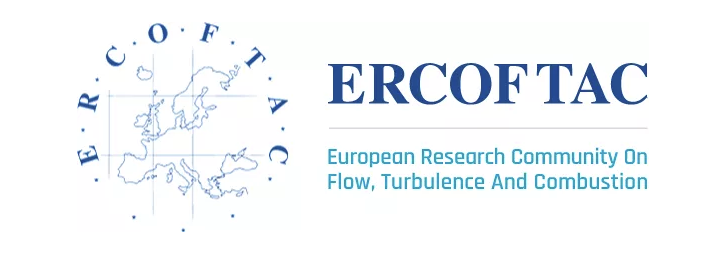WORKSHOP
Modal projection, stochastic and subgrid-scale modelling for turbulent flows
Projection modale et modèles stochastiques pour les écoulements turbulents
22 – 23 May, 2023
Organizing Committee
Comité d’organisation
Claude Cambon (CNRS – École Centrale Lyon)
Philippe Fraunié (Université de Toulon)
Andrzej Nowakowski (University of Sheffield)
Florence Raynal (CNRS – École Centrale Lyon)
Meetings around the DFGA theme (Dynamics of Geophysical and Astrophysical Fluids) have shown promising and truly multidisciplinary perspectives, in particular from the meeting co-organized by Philippe Fraunié in Paris in 2017, with the CNRS and the University. These themes are found in ERCOFTAC’s (European Research Community on Flow, Turbulence and Combustion) pan-European `SIG’s (Special Interest Group). Our event will therefore bring together the heads of five SIG’s: Tomas Bodnar (SIG 14 Stably-Stratified & Rotating Flows), Claude Cambon, CC (SIG 35 Multipoint Turbulence Structure & Modelling), Raffaele Marino (SIG 50 Geophysical & Astrophysical Flows), Andrzej Nowakowski (SIG 42 Synthetic Models in Turbulence) and Mikhaël Gorokhovski (SIG 53 Interfaces & Fragmentation).
Recent work has just illustrated the rapprochement of modal projection techniques for deterministic and statistical equations, and those of stochastic modeling for the internal intermittency of turbulence: the thesis entitled “Multi-fractal intermittency of forced and free turbulence studied with the gyroscope cascade model” was defended last December, under the supervision of Daniel Schertzer. We rarely find the keywords modal projection and stochastic approach in the same theoretical and numerical study, and this motivates our workshop and justifies part of its title.
Modal projection is essential to describe the complex dynamics of turbulence in the presence of waves, which help structure atmospheric and oceanic flows, such as inertia (rotation) and gravity (stratification) waves.
Stochastic modelling is essential for the description of intermittency in turbulent flows, often supported by a multifractal approach.
The last theme is the parametrization of small scales in Large-Eddy Simulation and is essential for the practical numerical simulation of flows at very high Reynolds number, in particular atmospheric.
Des réunions autour de la thématique DFGA (Dynamique des Fluides Géophysiques et Astrophysique) ont montré des perspectives prometteuses et réellement pluridisciplinaires, notamment à partir de la réunion co-organisée par Philippe Fraunié à Paris en 2017, avec le CNRS et l’Université. Ces thématiques se retrouvent dans les « SIG’s »(Special Interest Groups) paneuropéens d’ERCOFTAC (European Research Community on flow, turbulence and Combustion). Notre manifestation réunira donc les responsables de cinq SIG’s : Tomas Bodnar (SIG 14 Stably Stratified & Rotating Flows), Claude Cambon, CC (SIG 35 Multipoint Turbulence Structure & Modelling), Raffaele Marino (SIG 50 Geophysical & Astrophysical Flows), Andrzej Nowakowski (SIG 42 Synthetic Models in Turbulence) et Mikhaël Gorokhovski (SIG 53 Interfaces & Fragmentation).
Des travaux récents viennent d’illustrer le rapprochement des techniques de projection modale des équations, déterministes et statistiques, et de celles de la modélisation stochastique pour l’intermittence interne de la turbulence : la thèse intitulée “Multi-fractal intermittency of forced and free turbulence studied with the gyroscope cascade model” a été soutenue en décembre dernier, sous la direction de Daniel Schertzer. On retrouve rarement les mots clés projection modale et approche stochastique dans une même étude théorique et numérique, et cela motive notre workshop et justifie une partie de son titre.
La projection modale est essentielle pour décrire la dynamique complexe de la turbulence en présence d’ondes, qui contribuent à structurer les écoulements atmosphériques et océaniques, telles que les ondes d’inertie (rotation) et de gravité (stratification).
La modélisation stochastique permet de mieux décrire l’intermittence, notamment interne, des écoulements turbulents, souvent en liaison avec une description multifractale.
Le dernier thème est la paramétrisation des petites échelles en macrosimulation (Large-Eddy Simulation) et est incontournable pour la simulation numérique pratique des écoulements à très grand nombre de Reynolds, notamment atmosphériques.



